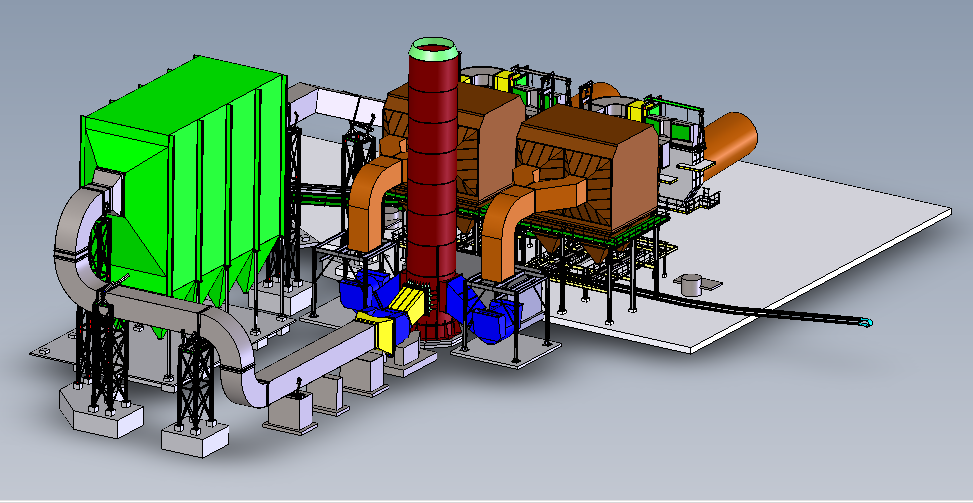Flow modeling of a new network of process gas ventilation ducts in a nickel smelter (GA5)
ISSUE
Designing ductwork for new ventilation systems that comply with state-of-the-art rules (transport velocity, straight length, radius of curvature of elbows, etc.) and the limited available space for their installation can be very complex in an existing plant. Under such conditions, the choice of the duct diameter, of the number of elbows and of the type of branching connections must be carefully made to avoid the risk of abrasion and of build-up of particles in these ducts which could have adverse consequences from a health, safety and maintenance point of view.
To avoid such problems, it is often necessary to use CFD (Computational Fluid Dynamics) modeling to visualize the velocity profiles obtained for different operating conditions (gas flow, temperature, dust loading and particle size) and thus to identify the critical points of the duct network.
TECHNOLOGICAL CHALLENGE
The challenge involved the development and the proper setup of CFD models to determine the velocity profiles in all sections of the duct network.
RECOMMENDED SOLUTION
STS Canada has therefore used a specialized CFD modeling software to validate the design of new ventilation network. Using the right input parameters, this CFD modeling software has enabled to visualize in 3D the velocity profiles throughout the ductwork, to identify the areas with risks of abrasion and those where the deposition and the accumulation of particles could occur.
RESULTS
The results obtained with the CFD modeling simulation software made it possible to visualize the velocity profiles that would be obtained in the new ventilation network. Areas where velocities were too high corresponded to the risks of abrasion and, conversely, low velocity areas corresponded to potential particle deposition areas. Following these simulations, the design of the ductwork was modified to obtain better velocity profiles and thus minimize the risk of abrasion and of particle accumulation. For areas of the network which were too difficult to modify, recommendations have been made to protect these areas of ducts against abrasion.
The use of CFD modeling simulation software has proven to be a wise choice and allowed to optimize the initial engineering concept of the ventilation network.

EXPERTISE
Gas treatment
Industrial ventilation.
INDUSTRY
Mine and Foundry
Nickel smelter
TASK PERFORMED
Engineering
Basic engineering of ventilation ducts
Optimization
Process simulation via CFD modeling
ESTIMATED COST
28000 CAD$
YEAR
2011